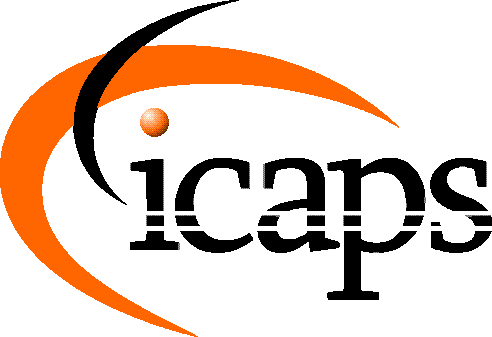|
Evaluation
criteria
The
winner of the competition will be decided by a board of judges
after a careful evaluation of both paper presentation and demonstration
of the tool.
Given
that the focus of this year competition is on translators and translation
processes, competitors should try to synthesize in the presentation
the added value of their problem translation in the following two
directions:
- what
advantages does planning bring in solving problems in the application
domain?
- what
is the added value for the planning community in having the chance
of using P&S technologies in the application domain?
For
the demonstration session, both Software Engineering (SE) issues
and P&S issues will be taken in account. Examples of SE related
criteria are
-
Portability, meant as a measurement of the "difficulty
of using the tool out of the laptop of the competitor".
- Robustness,
meant as a measurement of how much the value quality of the translation
is input-dependent.
- Usability,
meant as a measurement of how much is the tool usable either by
AI experts or target domain experts
- Spread
of use of the translator. (How many people so far have used
the tool? To do what? How much is the input language spread?)
- Perceived
added value to the application area. This is meant to be
an evaluation of the impact of the tool.
- Flexibility.
How would be easy to use the tool for domains out of those foreseen
by the authors? How demanding is to extend the set of problems
that it is possible to translate?
Examples
of more specific P&S criteria are:
- Originality.
Is the approach original (with respect to previous proposals by
other authors)?
- Comprehensiveness
of the translation process. Is the sub-set of the input language/problems
that can be translated well defined? Is the chosen subset enough
for targeting significant problems in the application community?
- The
challenges involved in the translation process. The more
different the input/output languages are, the more valuable should
the tool be.
- Connection
with the P&S technology.
Is the tool a comprehensive KE tool? Is there any available useful
translation of output plan or schedule back into the application
domain? Is there any feature available to interact with the planner/scheduler?
- Ingenuity
of the translator.
- Availability
of solvers
to input the translated domain model and performances of the planner
and/or schedule (when available) with the translated domains
The
above criteria are meant only as general guidelines to drive the
evaluation process. Given the high variability of competing tools,
not all the above listed criteria will be necessarily taken into
account for every tool, and further criteria might be considered
whenever needed (in these cases the use or not use of different
criteria will be explained).
Given
the practical infeasibility of giving an objective measure of each
criteria, in practice the judges will express their point of view
about them. The final result will be in any case justified by the
sum of the evaluations taken for each criteria.
Only
the winner and winner's performances will be publicly discussed
at the end of the competition (there will be no public ranking);
however, the evaluations of the remaining participants will be available
on the participant's request, and privately discussed.
The
board of judges:
Simone
Fratini - ISTC-CNR, Italy
Piergiorgio
Bertoli - Fondazione Bruno Kessler, Italy
Adi Botea - NICTA and The Australian National University,
Australia
In
conjunction with the International Conference on Automated
Planning and Scheduling (ICAPS-09)
|
Organizers
Roman
Barták, Charles University, Czech Republic
contact email: bartak (AT) ktiml.mff.cuni.cz
Simone
Fratini, ISTC-CNR, Italy
contact email: simone.fratini (AT) istc.cnr.it
Lee
McCluskey, University of Huddersfield, UK
contact email: lee (AT) hud.ac.uk
Programme
Committte
Sara
Bernardini
London Knowledge Lab, UK
Amedeo Cesta
ISTC-CNR, Italy
Stephen Cresswell
University of Huddersfield, UK
Stefan Edelkamp
University of Bremen, Germany
Susana Fernandez Arregui
Universidad Carlos III de Madrid, Spain
Jeremy Frank
NASA, USA
Antonio Garrido
Universitat Politecnica de Valencia, Spain
Robert Goldman
SIFT, USA
Arturo Gonzalez Ferrer
Universidad de Granada, Spain
Peter Jarvis
NASA, USA
Ugur Kuter
University of Maryland, USA
Clayton T. Morrison
The University of Arizona, USA
Julie Porteous
University of Teeside, UK
Tiago S. Vaquero
University of Sao Paulo, Brazil
Dimitris Vrakas
Aristotle University of Thessaloniki, Greece
Board
of judges
Simone
Fratini
ISTC-CNR, Italy
Piergiorgio Bertoli
Fondazione Bruno Kessler, Italy
Adi Botea
NICTA/ANU, Australia
|
|
 International
Competition on Knowledge Engineering for Planning and Scheduling
International
Competition on Knowledge Engineering for Planning and Scheduling